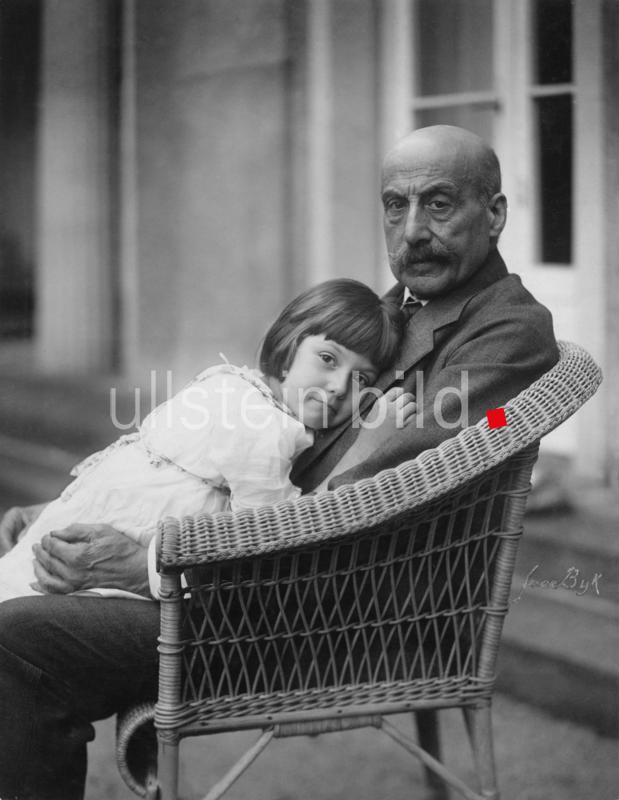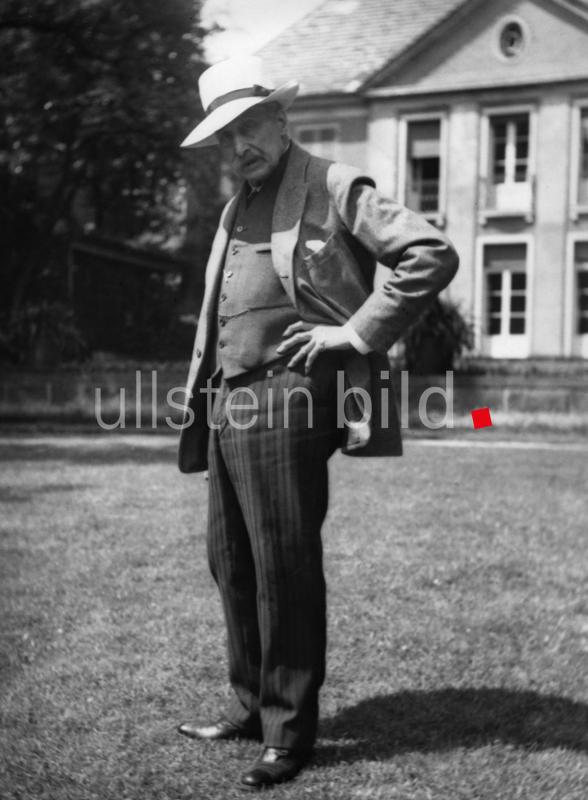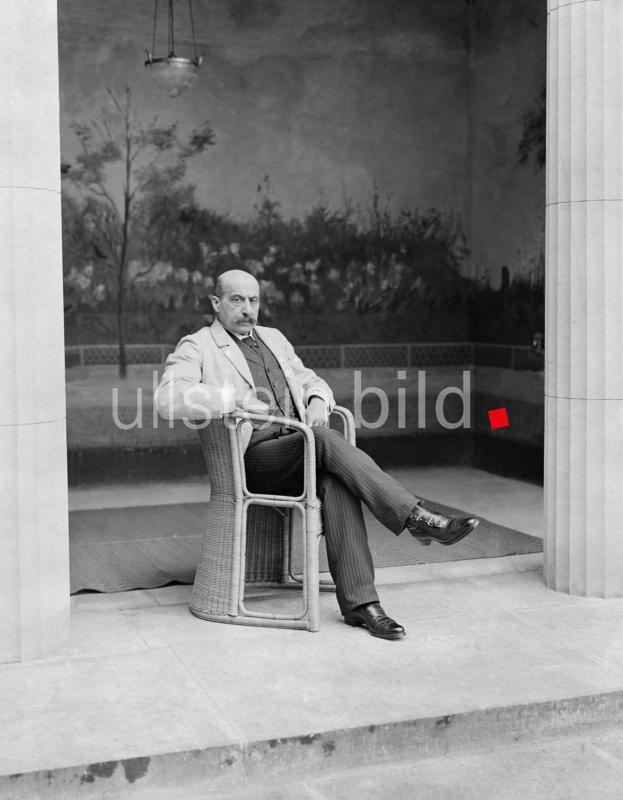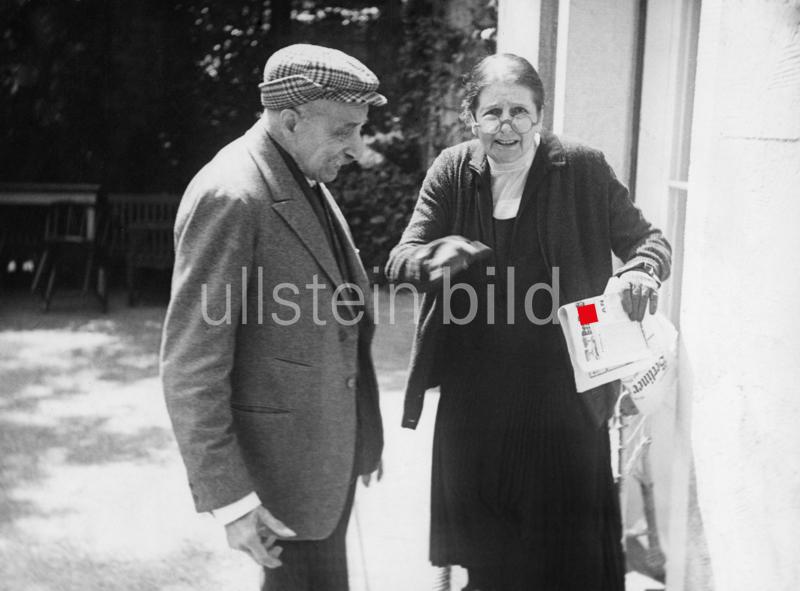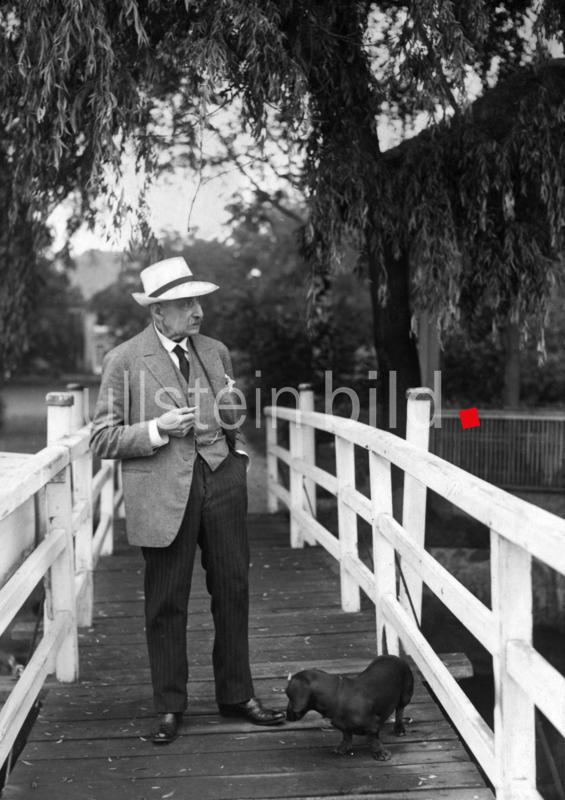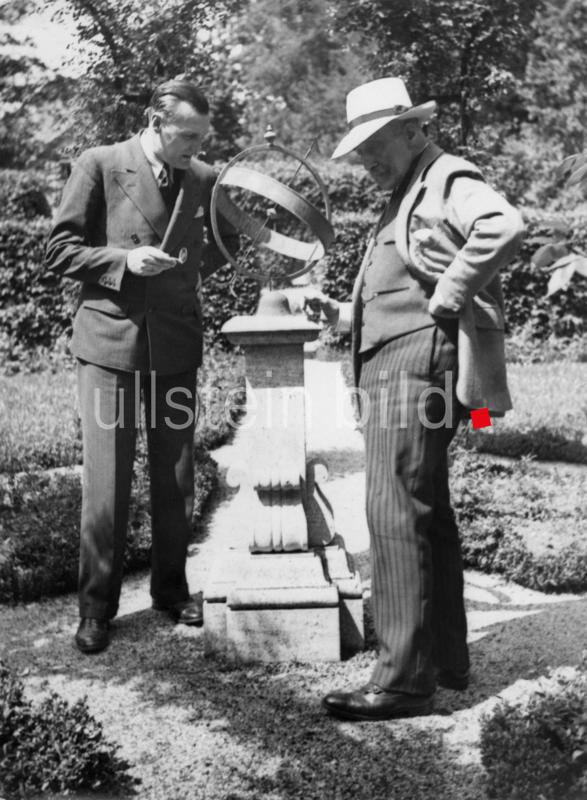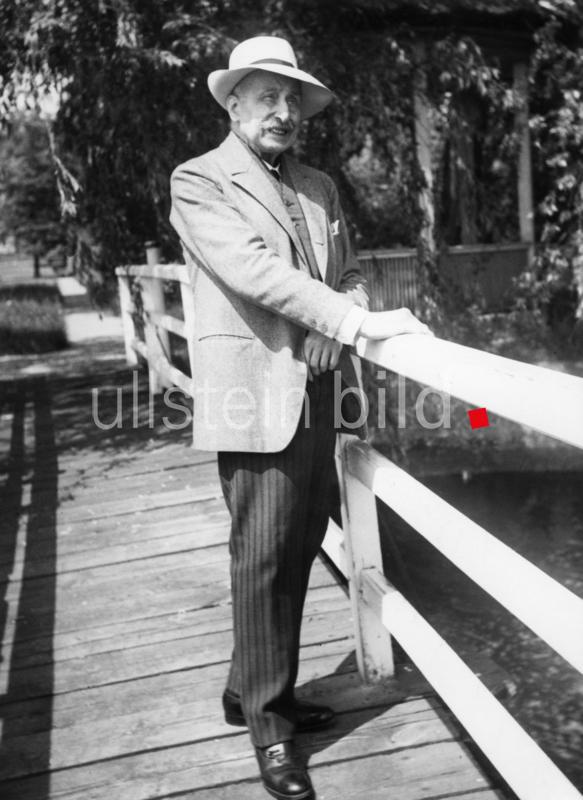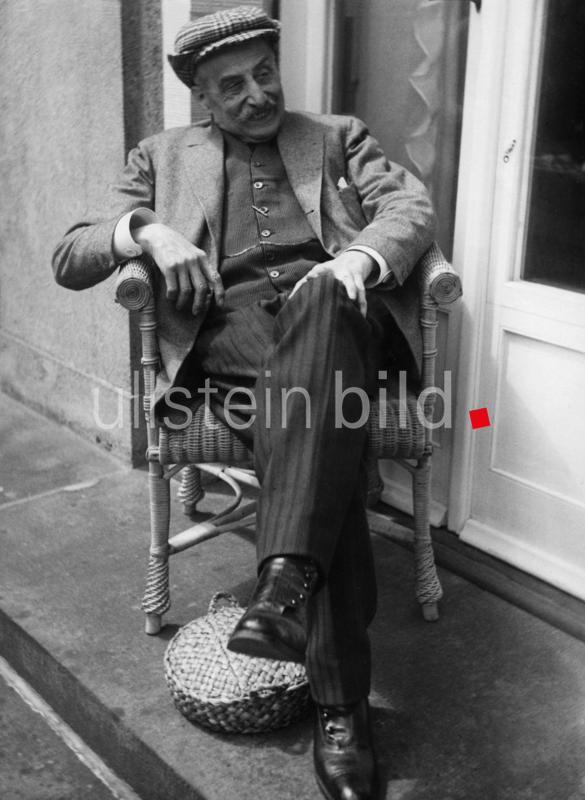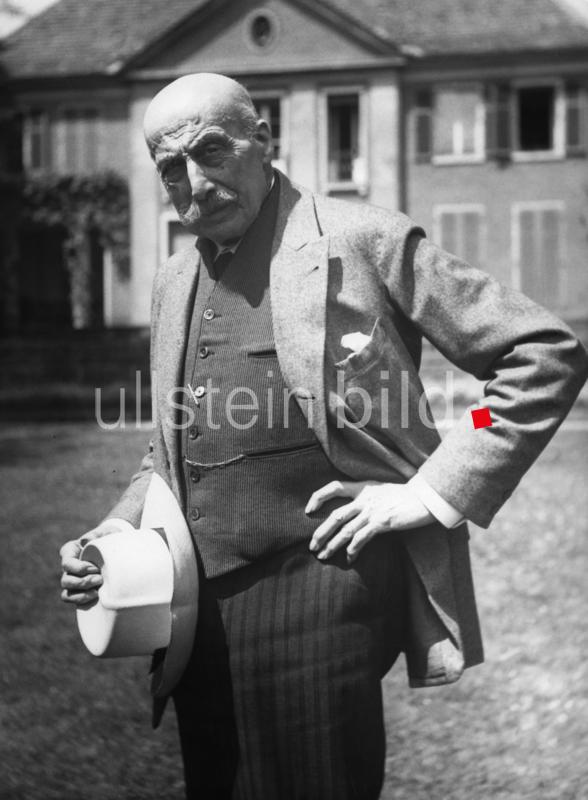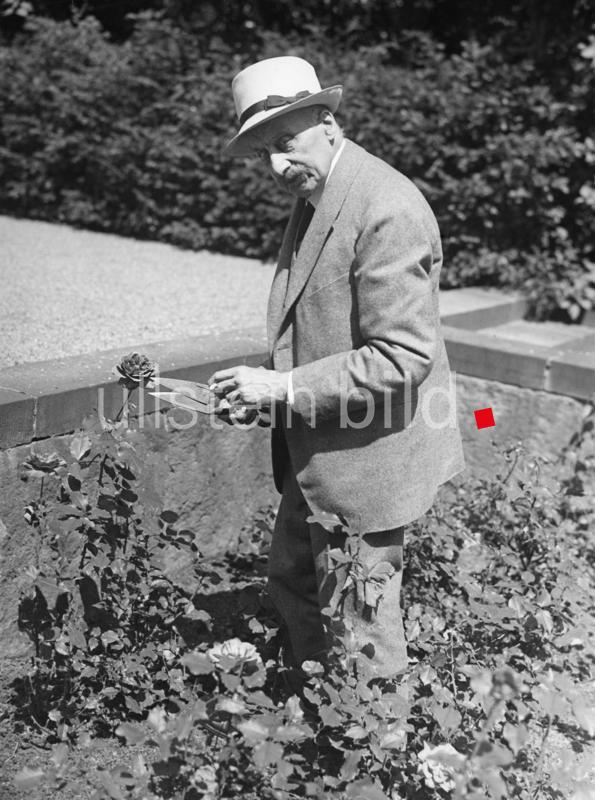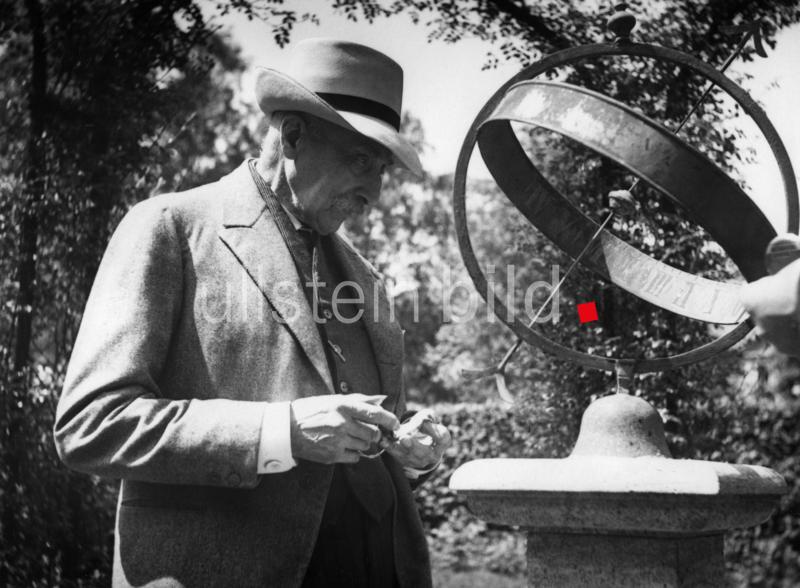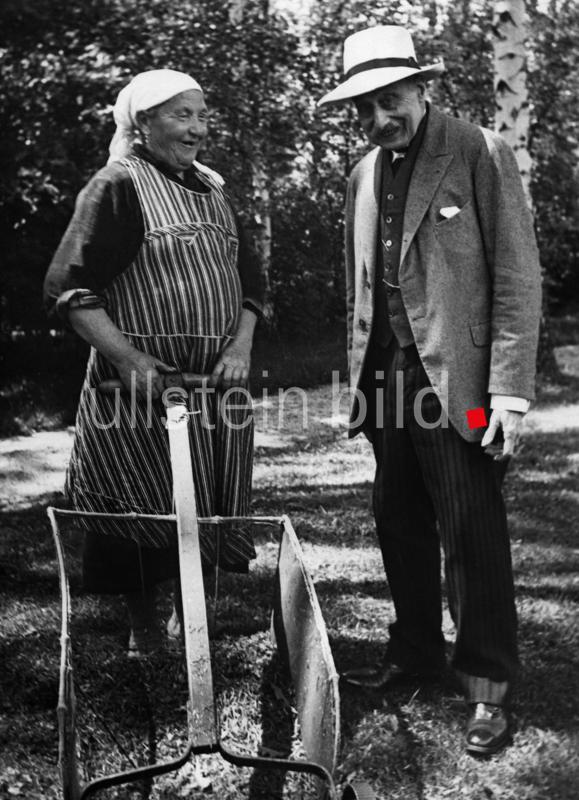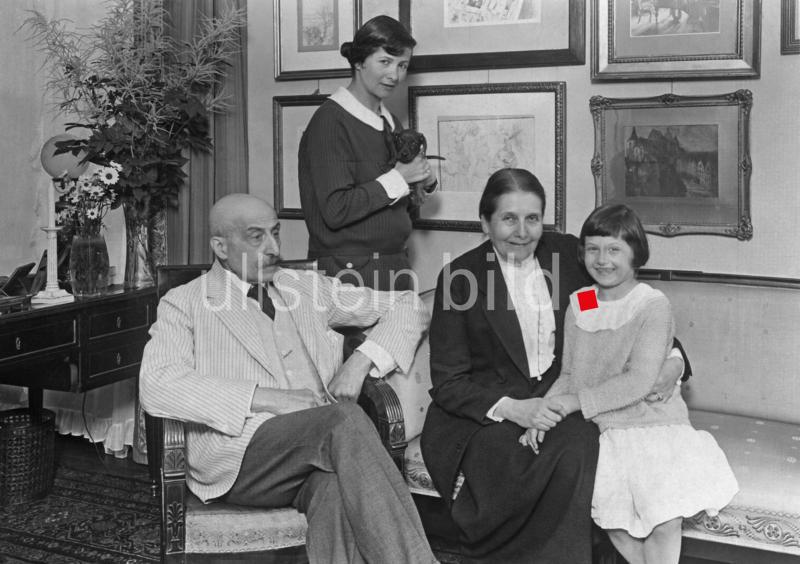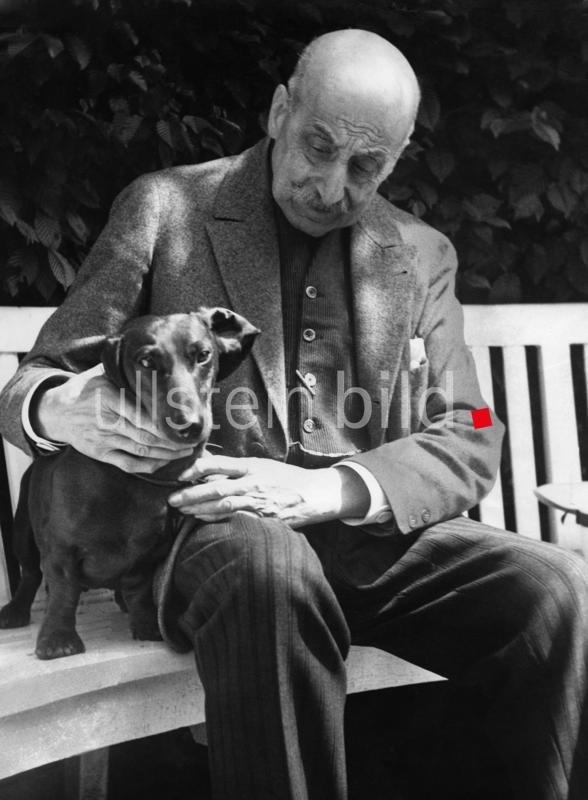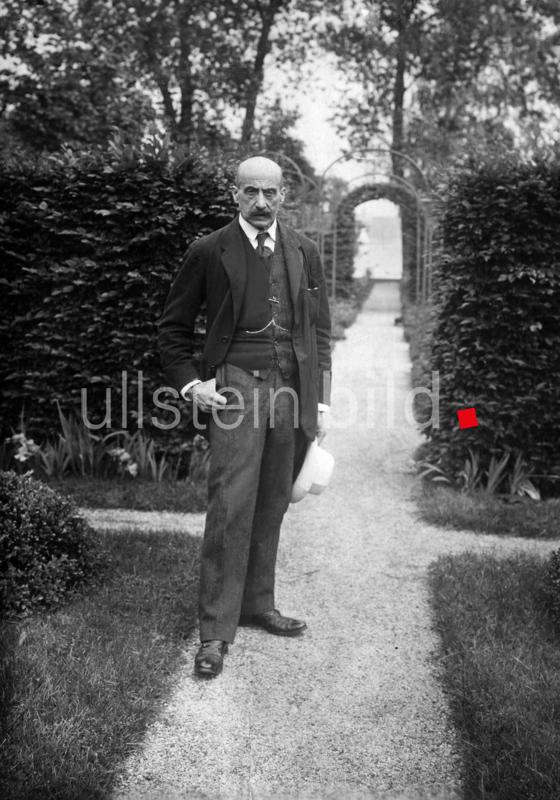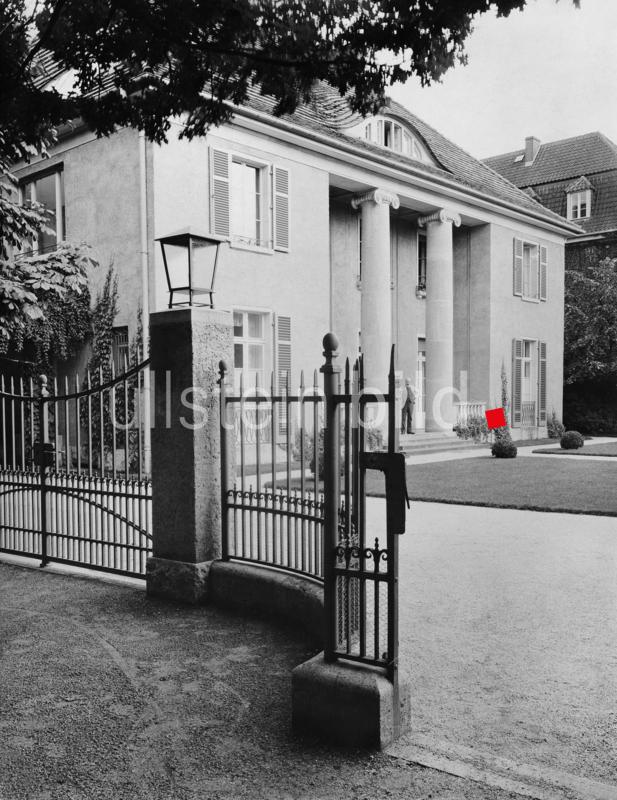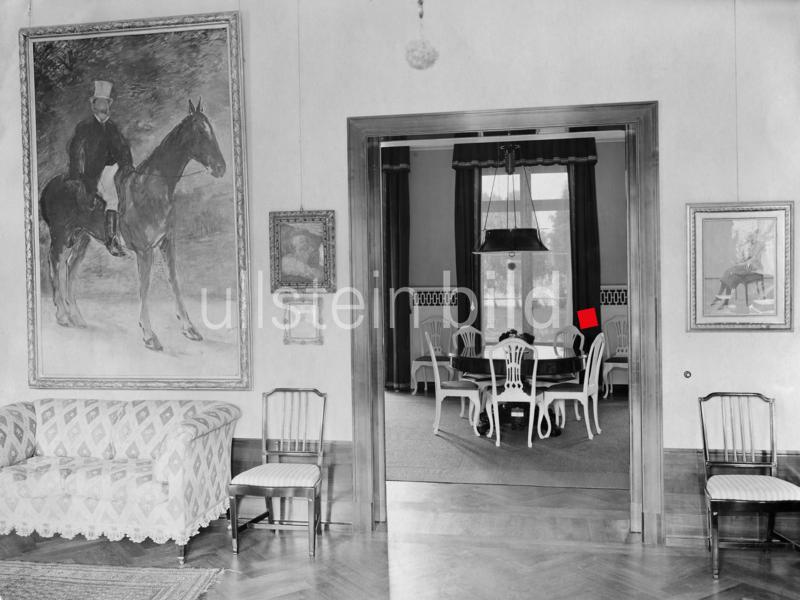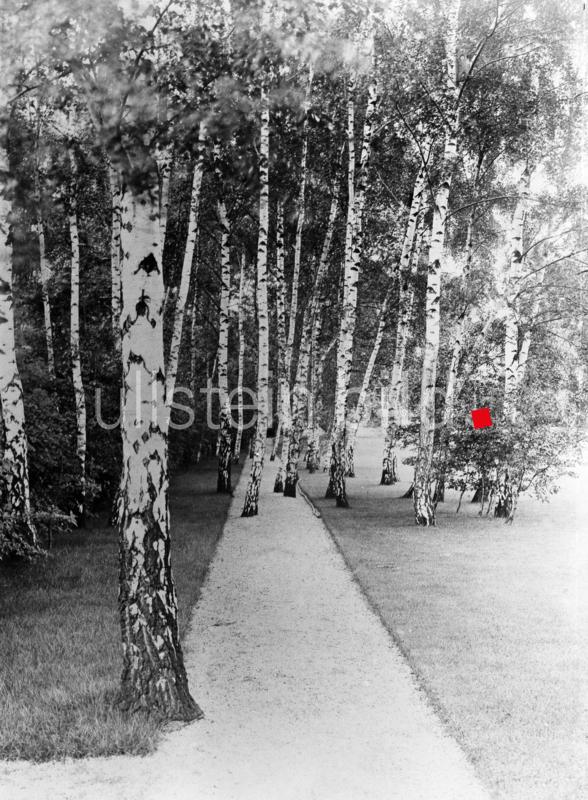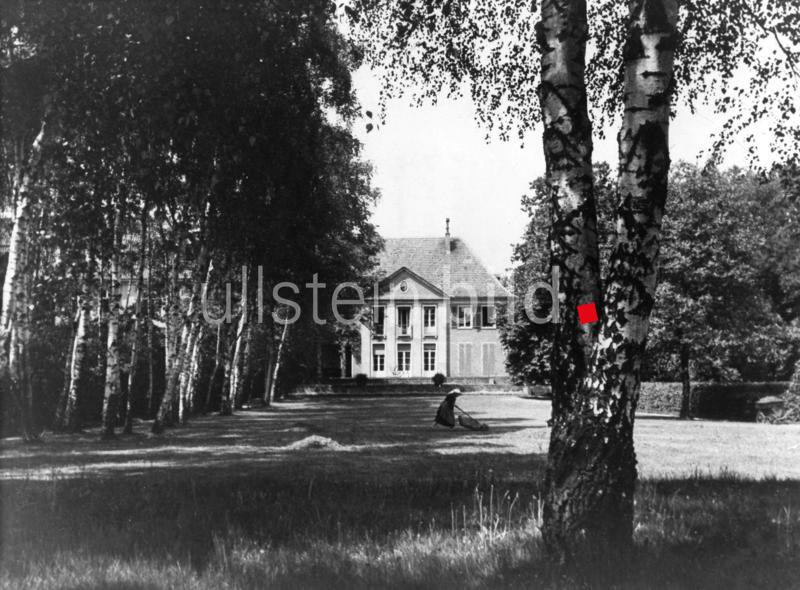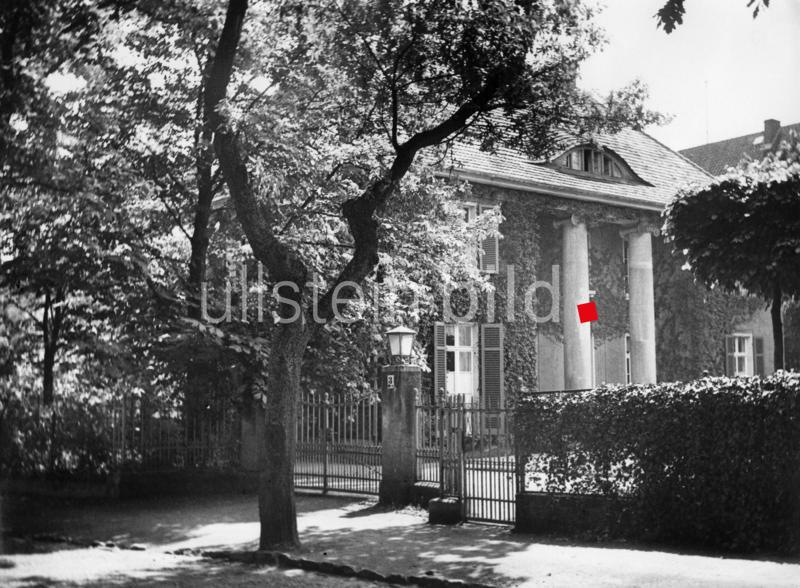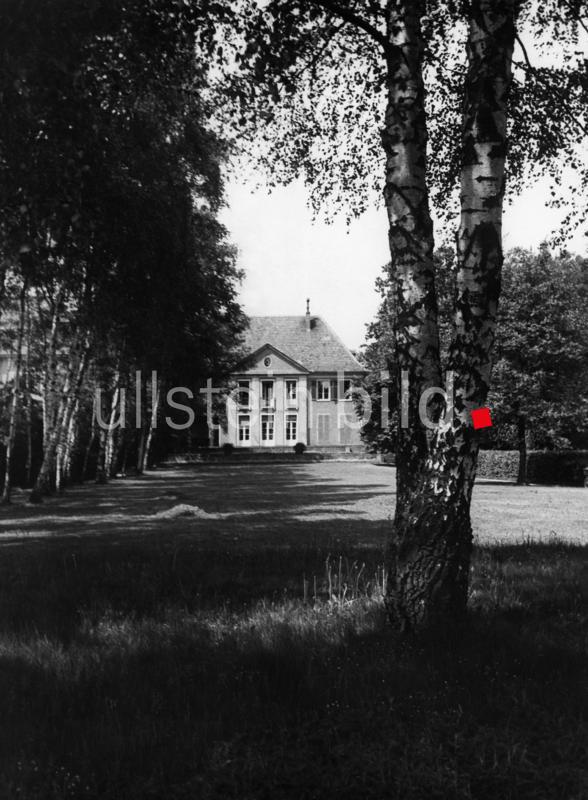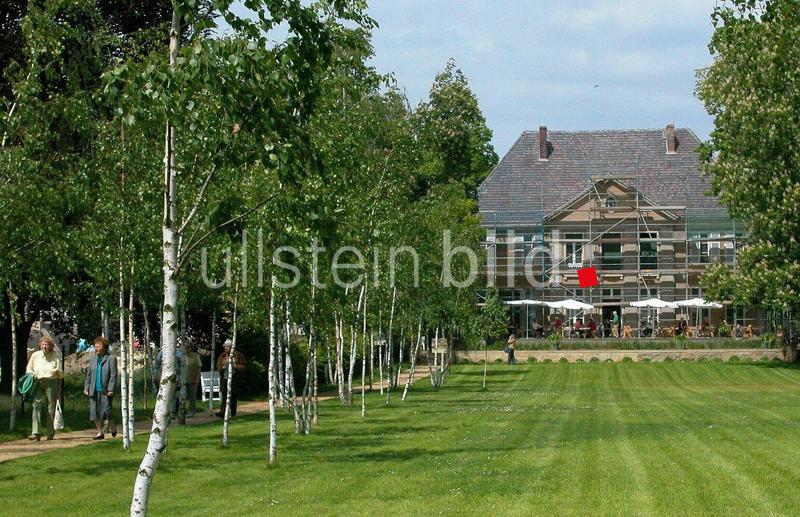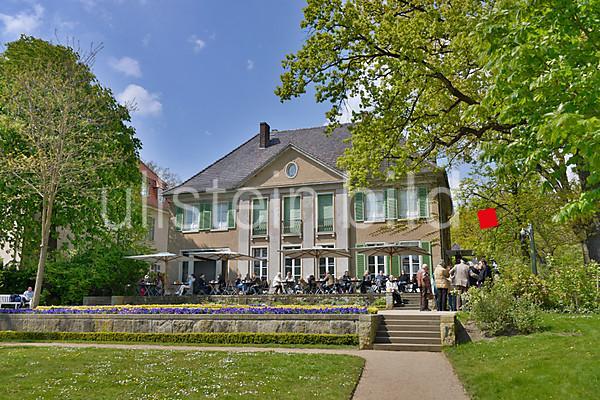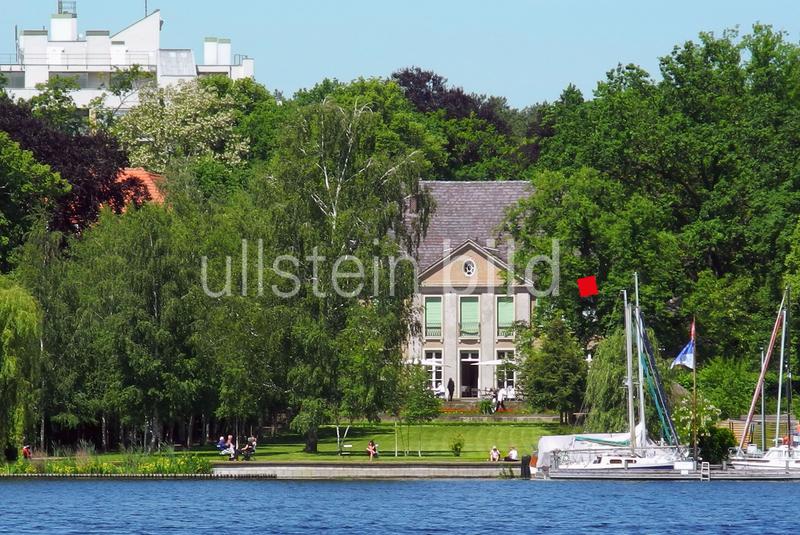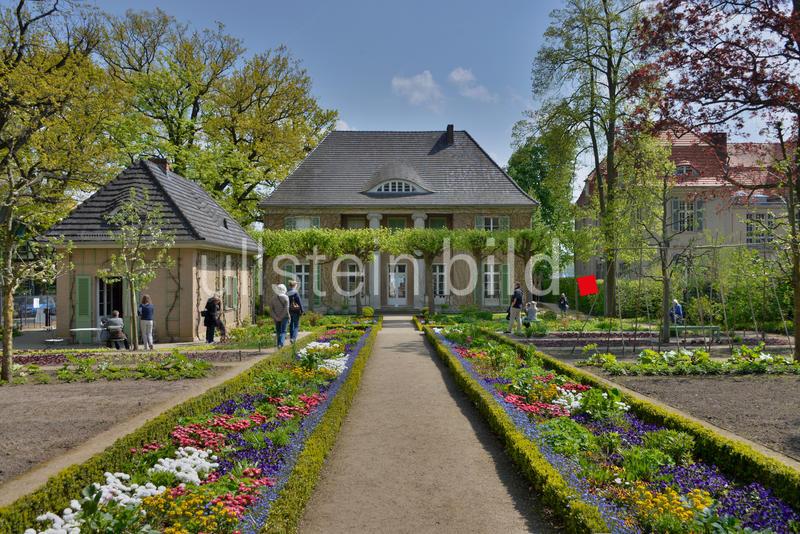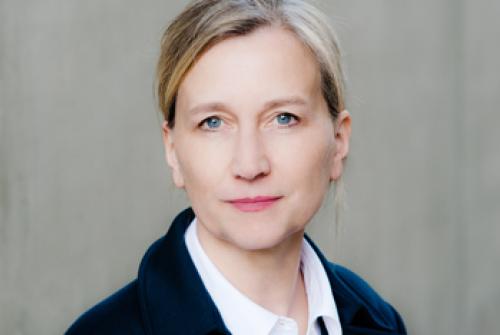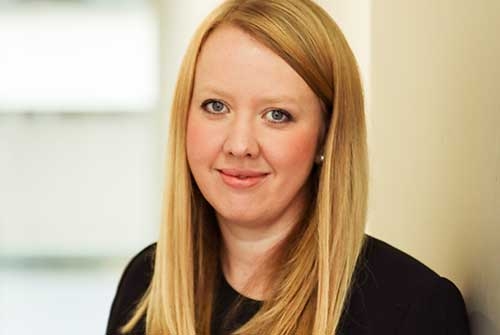Liebermann and Ullstein at Wannsee
Interview with Dr. Lucy Wasensteiner, Director of the Liebermann Villa on Wannsee in Berlin
_______________________________________________________________
From March to July 2023, the Ullstein photographic collection will be the focus of the exhibition Meeting Liebermann, which is dedicated to Max Liebermann's encounters with photographers, artists, editors, and writers. For this, the Ullstein publishing house was a decisive mediator and motor in the first decades of the 20th century. The exhibits are not only important from a photo-historical point of view, but will also provide insights into biographical contexts, artistic exchange, journalistic approaches and contemporary assessments.
Beforehand, we turn our attention to the exhibition venue, which could not be more worthy and fitting. For it was the site of these encounters and today – after years of complete reconstruction – it speaks to its visitors in a completely new way.
Ms. Wasensteiner, the Liebermann Villa stands architecturally and in terms of garden design in the tradition of country and artists' houses. To this end, Max Liebermann and his family were in lively exchange among themselves and with friends such as Alfred Lichtwark, the director of the Hamburg Kunsthalle. The garden design in particular grew out of a contemplation of nature that occupied the Impressionist Liebermann for a long time. Today, the webcam allows a day-by-day view of the front garden and the changing light conditions. What does your – almost daily – view of the garden and different seasons make you think of?
Dear Ms. Bomhoff, thank you very much for the opportunity to talk to you about our Liebermann Villa! It is of course a great pleasure for me to walk through the garden of the villa every day – sometimes simply on my way to the office, sometimes with guests or as part of a guided tour. I very often think of the beauty of this place, be it in midsummer with the wonderful flowers, in autumn with the wonderful colors of the leaves, or the view of the misty lake in winter. But often I also think of the love, dedication and energy that is put into this garden today and with which this garden was once planned. That which seems so natural to us is yet so fragile. We read in Liebermann's letters how Liebermann, together with Lichtwark, thought through and planned the garden down to the last detail. Every plant species and every path are well thought out. Later Liebermann painted his garden again and again, studied it very carefully and put it on canvas. And then – in the period after 1933 everything changed quite suddenly – Liebermann and his wife had died, their daughter Käthe and her family were in exile and the carefully laid out garden was destroyed. That is always a very sobering thought for me.
Today, of course, thanks to the commitment of the Max Liebermann Society and its many supporters, the garden shines again. But I also know how much work is behind it, how many hours our gardener and his volunteer team invest here; and how hard the museum team works to make this uniqueness accessible to visitors! This is often what goes through my mind when I walk through the garden.
In his biography of Liebermann, published by Bruno Cassirer in 1923, Erich Hancke describes the studio he moved into in 1899 on Pariser Platz: "The new studio was spacious and bright, but not very cozy and somewhat reminiscent of the photographers' shadeless glass houses." In the painter's studio and the photo studio of the time, light effects were among the crucial requirements. At Wannsee, however, Liebermann seems to have worked mainly plein air from 1910 onward, using the studio space there sporadically. Were the different qualities and functions of his two studios at Wannsee and Pariser Platz confirmed?
It's true that the studio at Wannsee has a different feel. Compared to Liebermann's studio on Pariser Platz, which has more of a 19th-century character, the villa on Wannsee seems much more modern. Visitors were almost horrified by the sobriety and the sparse furnishings of the studio. Erich Hancke, Liebermann's biographer once said "[...] this is the uncomfortableness itself [...]".
But – he worked a lot in his studio at the Wannsee, even if it is not immediately clear from the pictures. He reworked his outdoor works here and also painted portraits. For example, the picture of Martha and Maria, which can be seen here today. By the way, the painting was in the collection of the Ullstein family for several years.
You present the story of this work of art in your current exhibition on provenance research: When Pictures Speak.
Yes, the family portrait Grandmother and Granddaughter passed into the possession of the Ullstein family in 1923, one year after its creation. In the period from 1933 to 1945, the painting remained in the possession of the Ullsteins. In 1938, the Ullstein family went into exile; this painting survived the Second World War in the cellar of the Ullstein House in Berlin-Tempelhof. After Karl Hans Ullstein (1893-1964) returned from the United States in the 1950s, he found it badly damaged. A friend working as a painter was then commissioned to carry out a provisional restoration. After Karl Hans Ullstein's death in 1964, the painting passed into the possession of his two children. His son Hans took it first to London in the late 1960s and then to New York in the mid-1970s. In 2008, the work was acquired by the Ernst von Siemens Kunststiftung for permanent residence in the Liebermann Villa on Wannsee and was subsequently professionally restored.
An essential part of the house on Wannsee was Liebermann's art collection. The paintings with which he surrounded himself are at the same time a tribute to artists such as Edgar Degas, Claude Monet, Edouard Manet. They also reflect the importance of drawing in Liebermann's own artistic work. He calls it "hieroglyphic writing" and refers to the crucial "relationship of the artist to nature" (Max Liebermann, Speeches at the Opening of the Academy Exhibition, 1921). How can it be described, also against the background of his life at Wannsee?
Nature had a high priority for Liebermann throughout his life. At the beginning of his artistic career, he increasingly broke away from genre painting – from paintings with a profound message – to focus on life as it really was. This is evident early on with his paintings from the 1870s, for example, which dubbed him the so-called "Apostle of Ugliness."
And then, as the 19th becomes the 20th century, as artists around him move away from pure depictions of nature and into abstraction, Liebermann remains true to his naturalistic depictions. Of course, we are not talking about photorealism here. The art of an artist, according to Liebermann, is rather the ability to represent nature subjectively. Thus, in 1921, he wrote as follows: "The more naturalistic an artist is, the more he also seems to copy nature, the less he does. The born painter [...] paints not reality, but the idea of reality: he paints subjective nature [...] the greater and stronger his innate power, i.e. his genius, the more subjective, the more he will paint his nature, i.e. himself into the picture."
This conviction is also reflected in his own art collection, including the works he hung in the Villa am Wannsee. For example, the equestrian portrait by Edouard Manet that hung prominently in the entrance hall. It shows a man sitting on a horse. The depiction is completely reduced to the essentials. Here, color and form overlay all details, so that they recede into the background.
For many years, the house on Wannsee was the center of the family, as can be seen in a large number of Liebermann's works, which also portray his wife Martha, his daughter Käthe, and later his granddaughter Maria in the garden or in the house. Which of the Wannsee paintings are among your favorites?
That's a difficult question! I like the early garden works - they're almost tentative, restrained, and you can really feel Liebermann slowly getting to know his garden. But then when he really gets going, the works are so colorful that they almost go into the abstract. I particularly like those. And also the garden pictures that he painted in the 1930s, when Germany was plunged into disaster and when things were also out of joint for him personally. During this time, he nevertheless continues and paints his beautiful garden. Of course, this tells us a lot about his personality - like many of his contemporaries, he simply could not believe the developments in his country.
Numerous guests and artist colleagues visited Max Liebermann at Wannsee: Gustav Pauli discovered the drawing Birken am Ufer (1918) here and acquired it for the Hamburger Kunsthalle, Olaf Gulbransson swam through Wannsee on the occasion of his arrival at Liebermann's, Albert Einstein, Gerhart Hauptmann and Max Friedländer congratulated him on his birthday. What moves and interests today's visitors?
I think our visitors are fascinated by the special mix of experiences one can have in the Liebermann Villa. They often leave very touching dedications in our guest books. They are grateful that this place has been preserved and cared for today. The story of the Liebermann family and the summer house is, of course, so tragic, so wrong – but the place is beautiful and quiet. Standing in the garden on a summer day, but knowing the history – this impression is deeply moving.
What plans and wishes do you have for the near and distant future of the Liebermann Villa on Wannsee?
Next March we will be showing the wonderful portrait photographs of Liebermann from the Ullstein Collection. We are very pleased that this cooperation with you has come about! The core of this exhibition is a selection of photo-historically revealing original prints from your collection. Among them are photos by Yva, Nicola Perscheid, Frieda Riess and Erich Salomon. As part of the exhibition, we would like to tell the story of the individual photographic artists and focus on their encounters with Liebermann. Like the history of the Ullstein publishing house, some of the biographies presented in the exhibition are closely linked to persecution, exile, resistance and political adaptation.
The photo exhibition will be followed in the summer by an exhibition featuring students from the University of the Arts. We invite the painting class of Professor Christine Streuli to work site specifically with us in the Liebermann Villa. Since Liebermann supported so many young artists throughout his life, we take his commitment as a model and show young art from Berlin this year with us in the villa.
In the fall, a great project on the art historian, art collector and art dealer Grete Ring will follow. She worked as a business partner in the Paul Cassirer art salon and was highly respected as an art historian and critic in 1920s Berlin. Because of her Jewish background, Ring was forced to leave Germany in 1937. A year later, she opened the London branch of the Cassirer firm and successfully continued her work as an art dealer and art historian in Britain. The exhibition sheds new light on Ring's pioneering career between Berlin and London exile. We are also pleased to be able to show a selection of works from Ring's private collection. This collection was built up in Germany and is now housed at the Ashmolean Museum in Oxford - the Ashmolean will be our project partner for the exhibition.
The upcoming projects actually already show quite well our plans for the future – we want to interpret the theme "Liebermann" more broadly, and also connect it with today's Berlin. The Liebermann Villa does not receive any basic state funding and is 80% financed by admission tickets and membership fees from the Max Liebermann Society, so it is very important to us that we take up socially relevant content, get the public excited about the Liebermann Villa, arouse curiosity and encourage them to visit.
Thank you very much, Ms. Wasensteiner, for this interview!
The interview was conducted by Dr. Katrin Bomhoff, ullstein bild collection.
First publication on December 20, 2022.
In the gallery you can see a selection of images on our topic, the corresponding dossier can be found at ullstein bild.
Copyright images 1-17: sevens[+]maltry, Potsdam
![(c) sevens[+]maltry, Potsdam](/sites/default/files/media-images/content-gallery/Liebermann-Wannsee_01.jpg)
![(c) sevens[+]maltry, Potsdam](/sites/default/files/media-images/content-gallery/Liebermann-Wannsee_02.jpg)
![(c) sevens[+]maltry, Potsdam](/sites/default/files/media-images/content-gallery/Liebermann-Wannsee_03.jpg)
![(c) sevens[+]maltry, Potsdam](/sites/default/files/media-images/content-gallery/Liebermann-Wannsee_04.jpg)
![(c) sevens[+]maltry, Potsdam](/sites/default/files/media-images/content-gallery/Liebermann-Wannsee_05.jpg)
![(c) sevens[+]maltry, Potsdam](/sites/default/files/media-images/content-gallery/Liebermann-Wannsee_06.jpg)
![(c) sevens[+]maltry, Potsdam](/sites/default/files/media-images/content-gallery/Liebermann-Wannsee_07.jpg)
![(c) sevens[+]maltry, Potsdam](/sites/default/files/media-images/content-gallery/Liebermann-Wannsee_08.jpg)
![(c) sevens[+]maltry, Potsdam](/sites/default/files/media-images/content-gallery/Liebermann-Wannsee_09.jpg)
![(c) sevens[+]maltry, Potsdam](/sites/default/files/media-images/content-gallery/Liebermann-Wannsee_10.jpg)
![(c) sevens[+]maltry, Potsdam](/sites/default/files/media-images/content-gallery/Liebermann-Wannsee_11.jpg)
![(c) sevens[+]maltry, Potsdam](/sites/default/files/media-images/content-gallery/Liebermann-Wannsee_12.jpg)
![(c) sevens[+]maltry, Potsdam](/sites/default/files/media-images/content-gallery/Liebermann-Wannsee_13.jpg)
![(c) sevens[+]maltry, Potsdam](/sites/default/files/media-images/content-gallery/Liebermann-Wannsee_14.jpg)
![(c) sevens[+]maltry, Potsdam](/sites/default/files/media-images/content-gallery/Liebermann-Wannsee_15.jpg)
![(c) sevens[+]maltry, Potsdam](/sites/default/files/media-images/content-gallery/Liebermann-Wannsee_16.jpg)
![(c) sevens[+]maltry, Potsdam](/sites/default/files/media-images/content-gallery/Liebermann-Wannsee_17.jpg)
